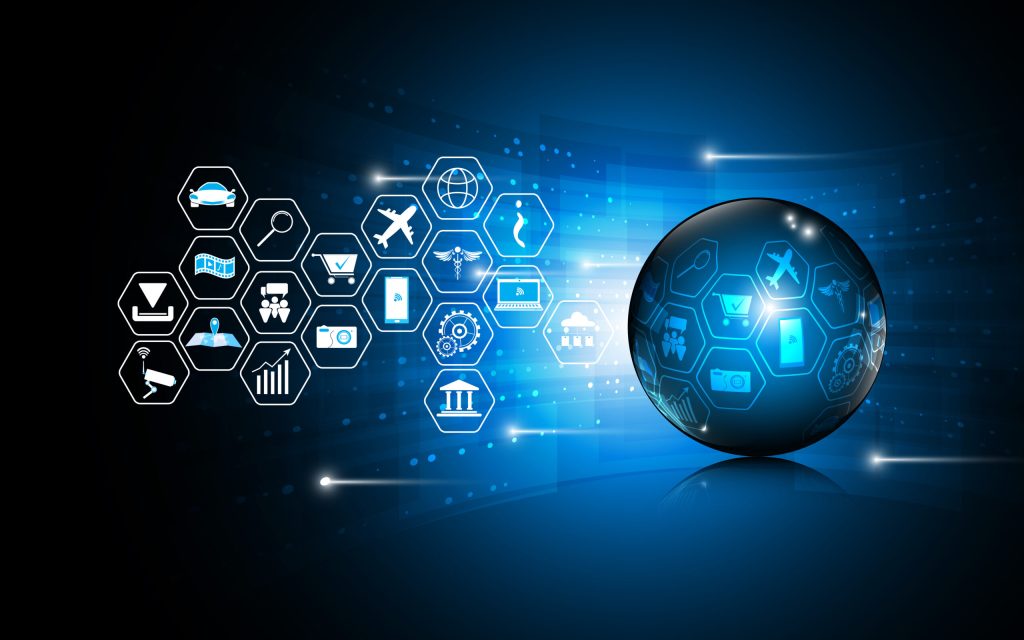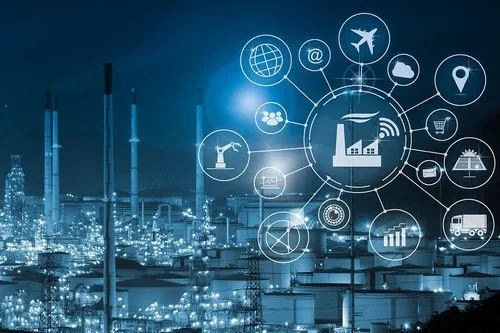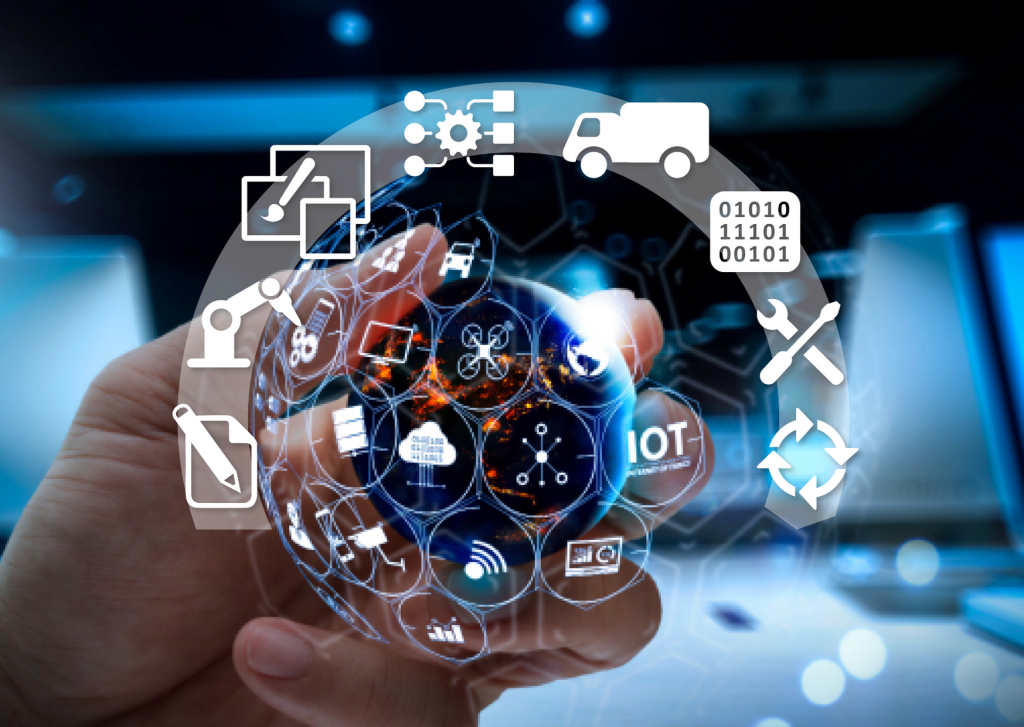How IoT Software Enhancing in Industrial Applications
In the realm of Industry 4.0, where connectivity and data reign supreme, the integration of Internet of Things (IoT) technology has revolutionized industrial processes. At the heart of this revolution lies IoT software, empowering businesses to optimize operations, enhance efficiency, and unlock new avenues of productivity. In this article, we delve into the significance of IoT software in industrial applications, exploring its role in device management, monitoring, and overall operational enhancement.
Table of Contents
Introduction to IoT Software
IoT software serves as the backbone of interconnected systems in industrial environments, facilitating seamless communication, data exchange, and control over a myriad of devices. At its core, IoT empowers organizations to harness the potential of connected devices, sensors, and machines to streamline operations, minimize downtime, and drive informed decision-making.

The Evolution of IoT Software
Over the years, IoT has undergone significant evolution, transitioning from simple data collection platforms to sophisticated solutions capable of predictive maintenance, real-time monitoring, and advanced analytics. One of the pivotal advancements in IoT is the emergence of specialized solutions tailored to specific industrial needs, such as IoT device management software and IoT monitoring software.
IoT Device Management Software
IoT device management software plays a crucial role in efficiently operating industrial IoT ecosystems. This software enables organizations to provision, configure, monitor, and manage IoT devices seamlessly. With features like remote device management, firmware updates, and security protocols, IoT device management software ensures the reliability and performance of interconnected devices.
Furthermore, IoT management software simplifies the deployment of IoT solutions at scale, allowing businesses to onboard hundreds or thousands of devices without manual intervention efficiently. This scalability is particularly essential in large-scale industrial deployments where managing diverse sets of IoT devices can be daunting without proper software infrastructure.

IoT Monitoring Software
In the dynamic landscape of industrial operations, real-time monitoring is indispensable for maintaining optimal performance and preventing costly downtime. IoT monitoring software empowers organizations to monitor critical parameters across interconnected devices and systems, such as temperature, pressure, humidity, and energy consumption.
By leveraging advanced analytics and machine learning algorithms, IoT monitoring software can detect anomalies, predict failures, and trigger proactive maintenance actions. This predictive capability enables organizations to shift from reactive maintenance strategies to proactive approaches, significantly reducing downtime and maximizing asset utilization.
Moreover, IoT monitoring software provides actionable insights derived from vast volumes of sensor data, enabling operators and decision-makers to identify trends, optimize processes, and drive continuous improvement initiatives. From production efficiency to energy management, IoT monitoring software serves as a valuable tool for optimizing various facets of industrial operations.
Enhancing Efficiency with IoT Software
The integration of IoT into industrial applications unlocks a plethora of benefits, ultimately enhancing efficiency across the board. Here are some key ways in which IoT software drives efficiency in industrial environments:
Predictive Maintenance: By leveraging IoT monitoring software, organizations can implement predictive maintenance strategies, reducing unplanned downtime and minimizing maintenance costs.
Remote Management: IoT device management software enables remote monitoring and management of devices, allowing organizations to streamline operations and reduce the need for on-site interventions.
Data-Driven Decision Making: With IoT software, businesses gain access to real-time data insights, empowering informed decision-making and enabling continuous optimization of processes and workflows.
Resource Optimization: By monitoring energy consumption, resource utilization, and asset performance, IoT software helps organizations optimize resource allocation and minimize waste.
Scalability and Flexibility: IoT solutions are designed to scale seamlessly, accommodating the evolving needs of industrial environments and ensuring flexibility in deployment and management.
Regulatory Compliance: IoT facilitates compliance with industry regulations and standards by providing robust security features, data integrity, and audit trails.

Case Studies: Real-World Applications
To illustrate the transformative impact of IoT software in industrial settings, let’s explore a couple of real-world case studies:
Predictive Maintenance in Manufacturing: A leading automotive manufacturer implements IoT monitoring software to predict equipment failures in its production lines. By analyzing sensor data in real-time, the software identifies early signs of component degradation, allowing the maintenance team to schedule repairs proactively and minimize downtime.
Energy Management in Smart Buildings: A commercial real estate company deploys IoT monitoring software to optimize energy consumption in its office buildings. By monitoring HVAC systems, lighting fixtures, and occupancy patterns, the software identifies opportunities for energy savings, leading to substantial cost reductions and environmental benefits.
Challenges and Considerations
While IoT software offers immense potential for enhancing efficiency in industrial applications, several challenges and considerations must be addressed:
Security Concerns: With the proliferation of connected devices, cybersecurity becomes a paramount concern. IoT software must incorporate robust security features to protect sensitive data and prevent unauthorized access.
Interoperability: In heterogeneous industrial environments, ensuring interoperability between different IoT devices and software platforms can be challenging. Standardization efforts and open-source initiatives play a crucial role in addressing this challenge.
Data Privacy: As IoT collects and processes vast amounts of data, organizations must adhere to stringent data privacy regulations to safeguard the rights of individuals and mitigate the risk of data breaches.
Integration Complexity: Integrating IoT software with existing legacy systems and infrastructure requires careful planning and execution. Compatibility issues, data migration challenges, and interoperability concerns may arise during the integration process.

Future Trends and Opportunities
Looking ahead, the future of IoT software in industrial applications appears promising, with several emerging trends and opportunities on the horizon:
Edge Computing: The adoption of edge computing technologies enables real-time data processing and analysis at the edge of the network, reducing latency and enhancing responsiveness in industrial IoT deployments.
AI and Machine Learning: The integration of artificial intelligence (AI) and machine learning algorithms into IoT software enables predictive analytics, anomaly detection, and intelligent automation, unlocking new levels of efficiency and productivity.
Blockchain Integration: Blockchain technology offers decentralized data storage and immutable transaction records, enhancing the security and transparency of IoT data exchanges in industrial ecosystems.
Digital Twins: The concept of digital twins, virtual replicas of physical assets and processes, is gaining traction in industrial IoT applications. IoT facilitates the creation and management of digital twins, enabling simulation, optimization, and predictive maintenance.
Conclusion
In conclusion, IoT software plays a pivotal role in enhancing efficiency, productivity, and competitiveness in industrial applications. From IoT device management software to monitoring solutions, the seamless integration of IoT enables organizations to optimize operations, minimize downtime, and drive innovation. By embracing IoT software and leveraging its capabilities, businesses can embark on a transformative journey towards Industry 4.0, where connectivity, data, and intelligence converge to redefine the future of industrial automation and efficiency.

